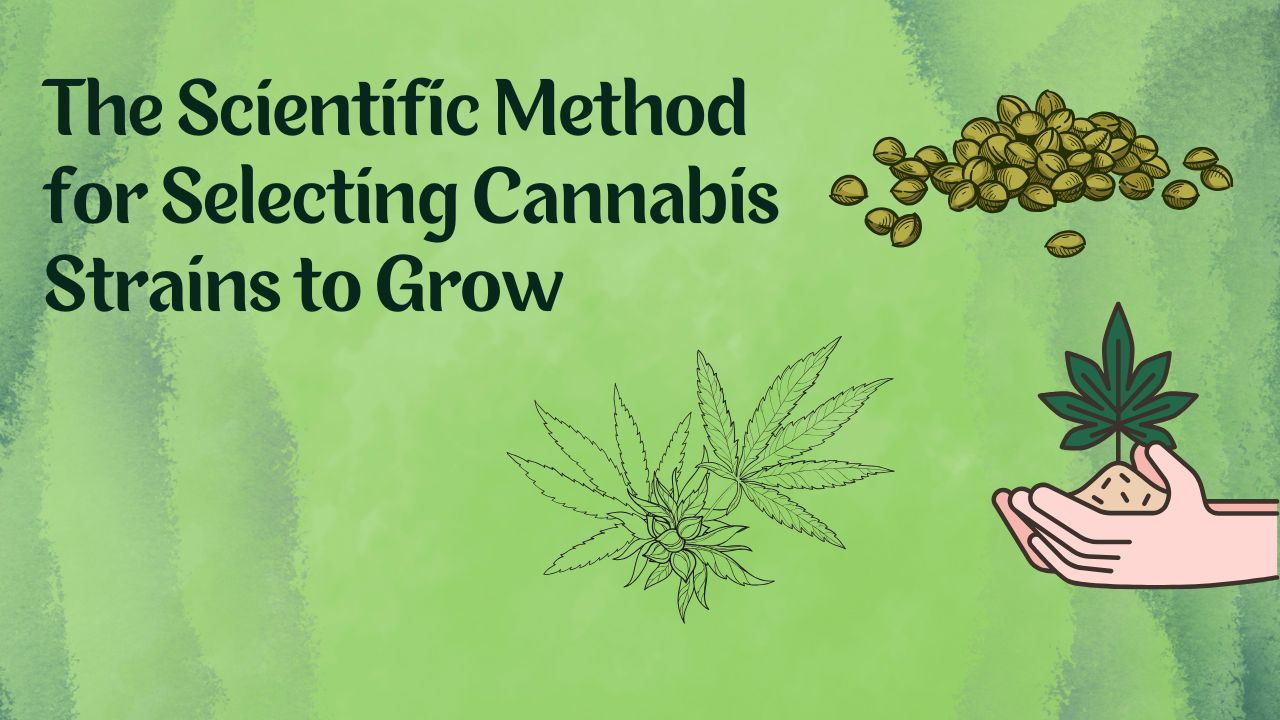Choosing the right cannabis strain stands as perhaps the most critical decision any cultivator makes. This choice dictates everything from growth patterns and yield potential to cannabinoid profiles and terpene expressions. With thousands of varieties available and new hybrids emerging constantly, selection requires a methodical approach grounded in botanical science rather than marketing hype.
Understand Cannabis Genetics
Cannabis genetics form the foundation of strain selection. Modern cannabis varieties descend primarily from three ancestral classifications: Cannabis sativa, Cannabis indica, and Cannabis ruderalis. Each contributes distinct characteristics to their descendants.
Sativa-dominant strains typically exhibit taller growth patterns with narrower leaves, longer flowering periods, and often produce cerebral effects. Indica-dominant varieties generally grow shorter and bushier with broader leaves, flower more quickly, and tend toward relaxing effects. Ruderalis genetics contribute autoflowering capabilities, allowing plants to flower based on age rather than light cycle changes.
Most commercial strains represent complex hybrids carrying genetic material from multiple lineages. This genetic diversity creates the vast spectrum of growth characteristics and chemical profiles available to cultivators today.
Define Your Cultivation Goals
Successful strain selection begins with clearly defined objectives. Consider these primary factors:
Growth environment constraints significantly narrow your options. Indoor growers with limited vertical space benefit from indica-dominant varieties or training-responsive strains. Outdoor cultivators in northern climates need fast-finishing varieties that resist mold during autumn rains. Greenhouse growers can accommodate a wider range of options but must still consider seasonal light patterns.
Cannabinoid targets determine which chemovars deserve consideration. CBD-rich strains require completely different genetic lineages than high-THC varieties. For medicinal applications, specific minor cannabinoid profiles may guide selection toward specialized breeding lines.
Terpene preferences influence both therapeutic potential and consumer appeal. Myrcene-dominant strains produce different effects than those rich in limonene or pinene. The terpene profile contributes significantly to both the sensory experience and entourage effect of the final product.
Analyze Growth Characteristics
Each cannabis variety exhibits specific growth traits that determine its compatibility with your cultivation system. Evaluate these key parameters:
Morphology varies dramatically between strains. Some develop a Christmas tree structure with a dominant central cola, while others branch extensively, creating multiple flowering sites. This growth pattern affects everything from plant spacing to training techniques.
Flowering time ranges from as little as 45 days to over 90 days depending on genetics. Longer-flowering strains often produce higher yields but require more resources and maintenance. Shorter flowering periods allow faster turnover but may sacrifice some production potential.
Yield potential correlates with genetic background, vegetative duration, and environmental optimization. Some varieties naturally produce dense, heavy flowers, while others develop lighter, more dispersed bud structures regardless of growing conditions.
Environmental adaptability determines how forgiving a strain will be to suboptimal conditions. Some varieties thrive across a wide range of environments, while others require precise parameter control to express their genetic potential fully.
Resistance Profiles and Vigor
Plant health management begins with genetic selection. Different cannabis varieties show varying resistance to common challenges:
Pathogen resistance varies significantly between strains. Some varieties demonstrate natural resistance to powdery mildew, botrytis, or fusarium, while others remain highly susceptible despite preventative measures. In humid environments, mold-resistant genetics become particularly valuable.
Pest tolerance follows similar patterns. Certain varieties naturally repel spider mites through terpene production or trichome density, while others attract these and other arthropod pests. This natural resistance can reduce intervention requirements throughout the growth cycle.
Stress tolerance determines how plants respond to environmental fluctuations. Heat-resistant strains maintain growth during temperature spikes that would cause others to wilt or hermaphrodite. Cold-tolerant varieties continue developing despite cooler night temperatures that would stunt less hardy plants.
Vigor assessment provides insight into overall genetic health. Plants with strong hybrid vigor establish quickly, recover rapidly from training, and generally demonstrate more aggressive growth throughout their lifecycle.
Chemical Profile Considerations
The biochemical characteristics of cannabis determine both its therapeutic potential and consumer experience:
Cannabinoid ratios represent the most scientifically significant selection criterion for many cultivators. Beyond simple THC or CBD percentages, the proportional relationship between these and minor cannabinoids creates the strain’s effects profile. Some varieties naturally produce significant quantities of CBG, CBC, or THCV alongside major cannabinoids.
Terpene production varies dramatically between genetic lines. Some strains naturally accumulate over 3% total terpenes, while others struggle to exceed 1% despite optimal conditions. This genetic ceiling limits the aromatic potential regardless of cultivation practices.
Flavonoid expression contributes to both color development and subtle aspects of the strain’s effects. Anthocyanin production, responsible for purple coloration, follows genetic patterns regardless of temperature manipulation.
Practical Selection Methodology
Apply this systematic approach when evaluating potential strains:
First, eliminate incompatible options based on non-negotiable constraints like flowering time, height limitations, or specific cannabinoid requirements. This initial filtering prevents consideration of varieties that cannot succeed in your environment.
Next, rank compatible options based on resistance profiles most relevant to your growing region. Prioritize natural resistance to the specific challenges your operation faces most frequently.
Then evaluate remaining candidates for yield potential and growth characteristics that align with your cultivation system. Consider how each variety’s natural growth pattern complements your training methodology and spacing configuration.
Finally, select for chemical profile targets that match your end-use requirements. This final filter ensures the selected varieties will produce the specific cannabinoid and terpene profiles your application demands.
Scientific Testing and Validation
Commercial cultivators benefit from implementing controlled trials before full-scale adoption:
Small-batch testing allows evaluation of multiple candidates simultaneously. Growing several potential varieties under identical conditions reveals their relative performance in your specific environment.
Data collection throughout the growth cycle provides valuable insights beyond final yield metrics. Tracking developmental milestones, nutrient sensitivity, and stress responses creates a comprehensive performance profile for each variety.
Laboratory analysis confirms chemical composition and verifies that selected phenotypes express the target compounds in the desired ratios. This validation ensures the strain’s biochemical profile matches cultivation objectives.
Conclusion
Strain selection represents a critical scientific decision that cascades throughout the entire cultivation process. By systematically evaluating genetic backgrounds, growth characteristics, resistance profiles, and chemical potentials, cultivators can identify varieties optimally suited to their specific environments and objectives. This methodical approach replaces subjective selection with data-driven decision-making, ultimately leading to more consistent, productive, and targeted cultivation outcomes.

